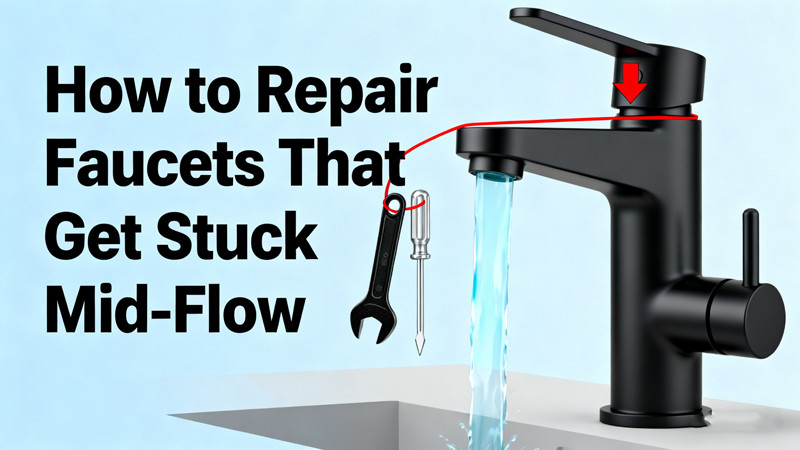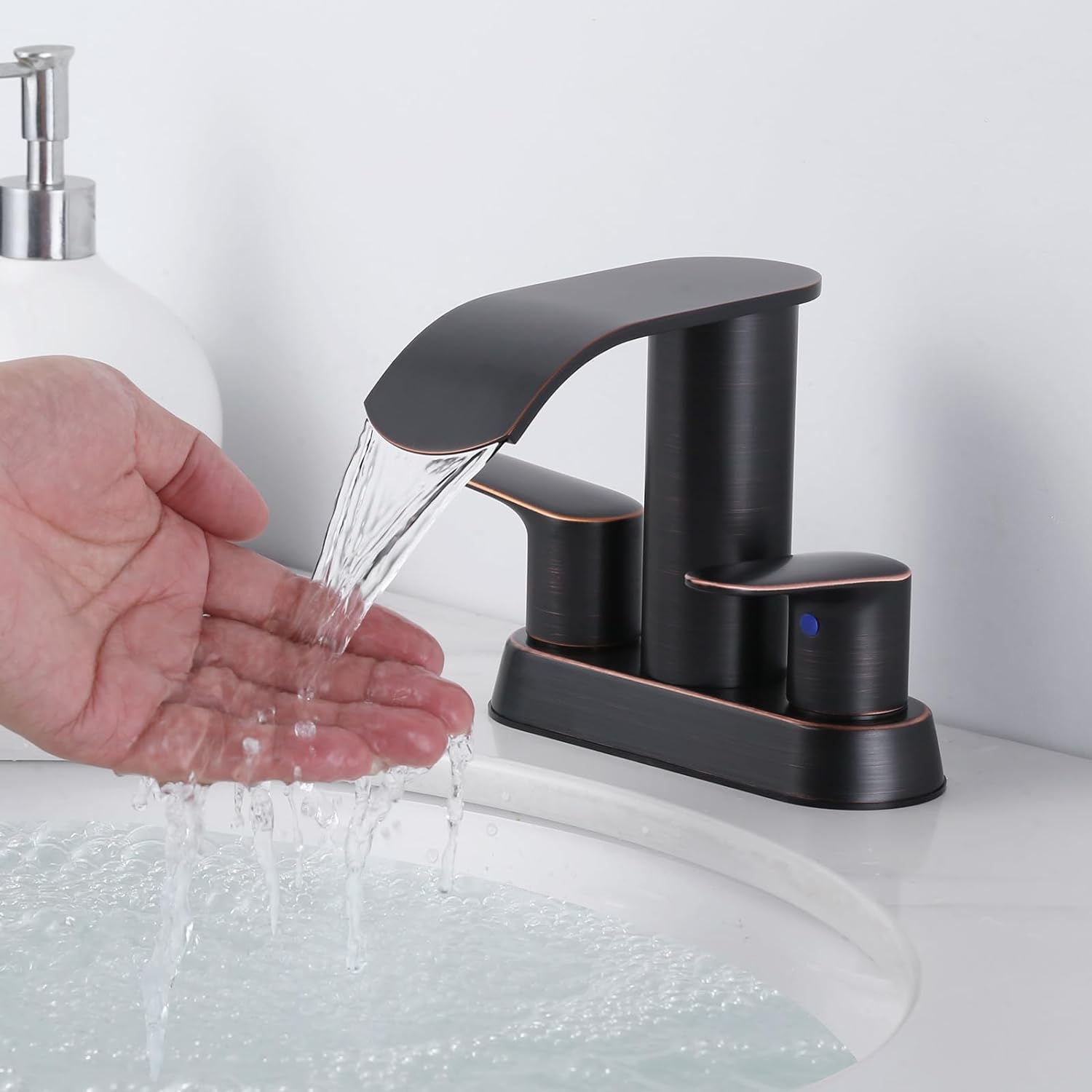A faucet is one of the most used fixtures in your home. Whether in the kitchen, bathroom, or laundry room, it provides clean running water at the twist of a handle or lift of a lever. But what happens when that smooth operation stops working, and your faucet gets stuck mid-flow? Suddenly, water dribbles inconsistently, the handle won’t budge, or the flow cuts out before you’re ready. It’s frustrating, inconvenient, and in some cases, a sign of deeper plumbing issues.
Fortunately, a stuck faucet doesn’t always mean a costly replacement. With the right understanding of the problem and a few repair techniques, you can often restore your faucet to full function. This guide will explain common reasons faucets get stuck mid-flow and walk you step-by-step through practical repair solutions.
Why Faucets Get Stuck Mid-Flow
Before diving into repairs, it helps to understand the causes. Faucets are mechanical devices with moving parts that regulate water flow. If something interferes with that process, the faucet may get stuck halfway open. The most common causes include:
- Mineral Buildup
Hard water contains calcium, magnesium, and other minerals. Over time, these deposits can build up inside cartridges, aerators, and valve seats, making it difficult for parts to move smoothly. - Worn or Damaged Cartridges
Modern faucets often rely on cartridges or ceramic discs to regulate flow. When these components wear out, they can jam in awkward positions, causing water to stop mid-flow. - Corrosion
Metal parts exposed to water may corrode, especially if the finish has worn off. Corrosion increases friction, leading to stiff or stuck handles. - Debris in the Water Line
Small bits of sediment, rust, or even plumber’s tape can lodge inside the faucet, blocking water from flowing freely. - O-Ring or Washer Issues
Loose, swollen, or broken O-rings and washers can interfere with movement, preventing the faucet from opening or closing smoothly.
Step-by-Step Guide to Repairing a Stuck Faucet
Step 1: Shut Off the Water Supply
Always start by turning off the water valves under the sink. This prevents accidental flooding when you disassemble the faucet. Open the faucet to release any remaining water pressure.
Step 2: Identify the Type of Faucet
Different faucet designs have slightly different repair processes. Common types include:
- Cartridge faucets (single- or double-handle)
- Compression faucets (older styles with rubber washers)
- Ball faucets (common in kitchens)
- Ceramic disc faucets (durable, modern design)
Knowing your faucet type helps you focus on the right components.
Step 3: Remove the Handle
Use a screwdriver or hex key to loosen the screw holding the handle in place. Lift the handle off carefully. If the handle itself feels corroded or stuck, apply a little penetrating oil and gently wiggle it loose.
Step 4: Inspect the Cartridge or Valve Assembly
Once the handle is removed, you’ll see the cartridge, valve stem, or ball mechanism. Look for:
- Mineral deposits or crusty buildup
- Cracks or worn-out parts
- Jammed or misaligned components
If you spot mineral buildup, soak the cartridge or valve in vinegar for 30 minutes, then scrub gently with a soft brush.
Step 5: Check Washers and O-Rings
Examine the rubber seals and O-rings. If they’re swollen, brittle, or misshapen, replace them with new ones. These parts are inexpensive and often included in faucet repair kits.
Step 6: Clean the Aerator
Sometimes the issue isn’t with the valve at all but with the aerator at the tip of the faucet spout. Unscrew it, soak it in vinegar, and clear away debris with a toothpick or brush. Reinstall and test the flow.
Step 7: Replace Worn Parts
If cleaning doesn’t fix the problem, you may need to replace the cartridge, ball, or ceramic disc. Most hardware stores carry replacement parts compatible with popular faucet brands. Take the old part with you to ensure an exact match.
Step 8: Reassemble and Test
Once cleaned or replaced, reassemble the faucet in reverse order. Slowly turn the water supply back on and test for smooth operation. The handle should move freely, and the water should flow consistently without getting stuck mid-stream.
Preventing Future Problems
Repairing a faucet is one thing, but preventing future mid-flow issues saves time and money. Here are some preventive measures:
- Install a Water Softener
If you have hard water, a water softener reduces mineral buildup, prolonging the life of your faucet. - Clean the Aerator Regularly
Every few months, remove the aerator and rinse away debris before it accumulates. - Operate Handles Gently
Forcing handles too hard can damage cartridges and washers. Use smooth, even pressure instead. - Schedule Annual Maintenance
Once a year, take apart your faucet, clean the internal components, and lubricate moving parts with plumber’s grease. - Replace Cartridges Before They Fail
Most cartridges last 5–10 years. If yours is nearing that age, replace it proactively to avoid sudden mid-flow jams.
When to Call a Professional
Not every stuck faucet can be repaired with DIY methods. Call a plumber if:
- You can’t remove corroded parts without risking damage.
- The faucet continues to stick even after cleaning and replacing components.
- Water pressure remains inconsistent across multiple fixtures, which could signal a larger plumbing issue.
A licensed plumber can diagnose hidden problems like clogged supply lines, failing shutoff valves, or outdated plumbing that needs upgrading.
Final Thoughts
A faucet that gets stuck mid-flow is more than just a nuisance—it’s often a symptom of mineral buildup, worn parts, or internal corrosion. By understanding the root cause and following a careful repair process, you can often restore your faucet to smooth operation without replacing the entire fixture.
Regular cleaning, gentle handling, and timely replacement of cartridges or washers will keep your faucet running like new for years. And if the problem persists despite your best efforts, don’t hesitate to call a professional for help.
Taking the time to fix a stuck faucet now not only saves you money on water waste and costly replacements but also ensures the everyday comfort of reliable, consistent water flow.
 WOWOW Faucets
WOWOW Faucets






